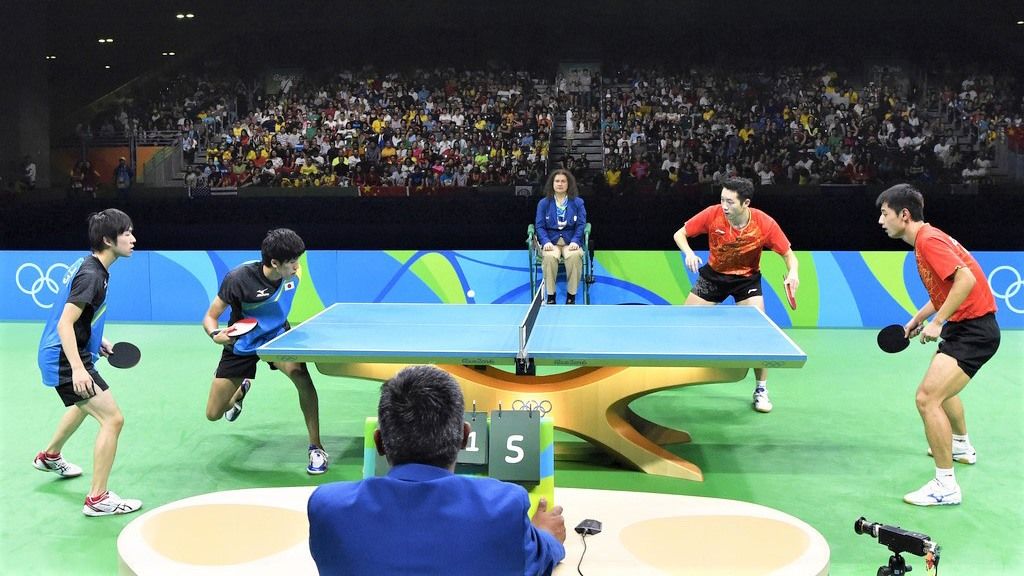
Japan’s Innovations in the Sporting World
An All-New Take on the Table Tennis Table
Sports Technology- English
- 日本語
- 简体字
- 繁體字
- Français
- Español
- العربية
- Русский
From Lumber Merchant to Sporting Equipment Supplier
When the first-ever South American Summer Olympics were held in Rio de Janeiro in 2016, an unexpected item of sporting equipment stole the limelight: a table tennis table. Sporting gold-colored crossed legs and named the Infinity, the table had the beauty of a piece of art, and was the work of Japanese sporting equipment manufacturer San-Ei.
In fact, San-Ei did not start out as a manufacturer of sporting equipment. Rather, the company was founded in 1940 as Matsuda Lumber in Taitō, Tokyo, where it supplied lumber for use in vaulting horses, balance beams, and table tennis tables.
Early on, though, Matsuda’s customers wanted it to create a warp-resistant table top. Miura Shin, the current CEO and grandson of the founder, explains:
“Because these tables are wooden, their biggest issue is warping and cracking resulting from age and environmental fluctuations. Through a process of trial and error, my grandfather, who founded the company, developed a special type of plywood for use in table tennis tables. This invention enabled the company not just to manufacture table tennis tables, but to sell them directly to consumers. It didn’t seem right for a lumber supplier to sell sporting goods, however, and that’s why we established San-Ei in 1962.”
The reputation of San-Ei’s warp-resistant tables steadily improved, helped by the fact that the company was a lumber specialist. While every other manufacturer sourced prefabricated table tops on the market, San-Ei made its own, fabricating them using a unique process that involved multiple layers of plywood.
“We’re the only people doing this anywhere in the world,” says Miura.
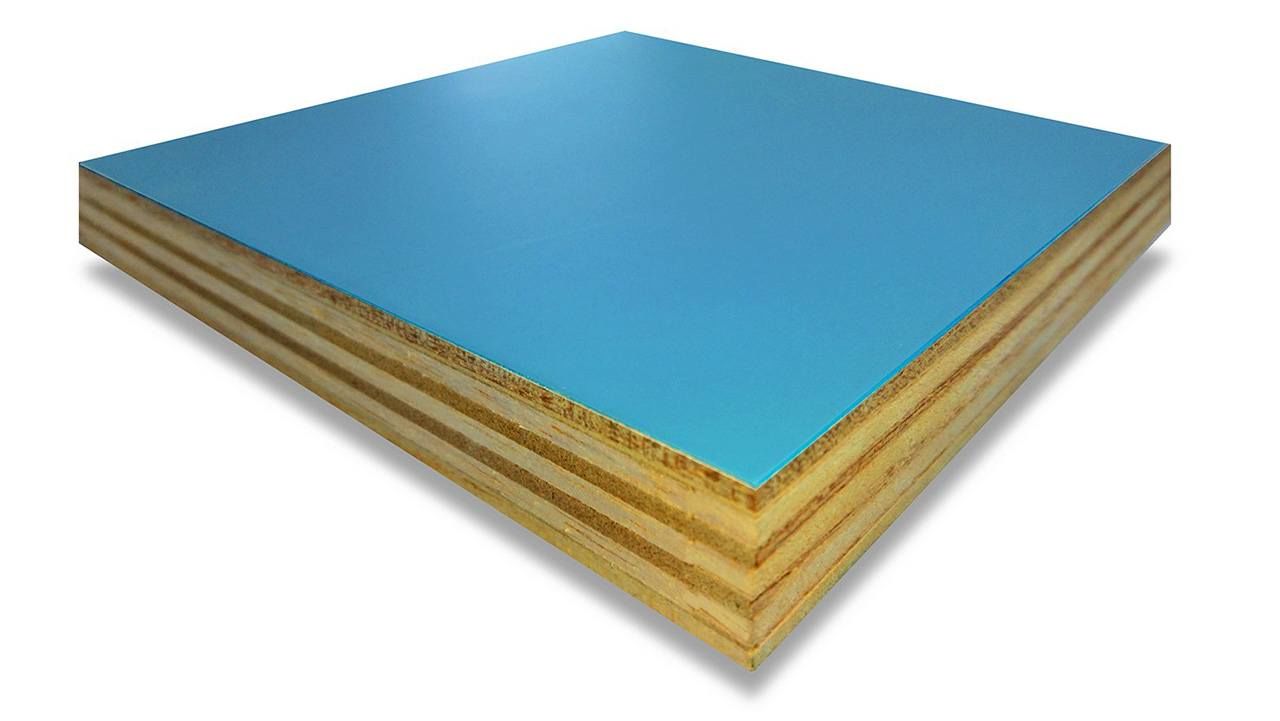
A cross section of a table top manufactured by San-Ei. The plywood’s warp-resistant properties are backed up by extensive expertise. (Courtesy of San-Ei)
Hiccups Mar International Debut
A surprisingly recent arrival, table tennis has only been an Olympic event since the 1998 Seoul games. The Olympic debut of the San-Ei table came a mere four years later, at the 1992 Barcelona games.
“The organizers of the 1991 World Table Tennis Championships in Makuhari, Chiba, used our tables because we were a Japanese manufacturer. While table tennis tables have traditionally been green, people loved the blue tables used at the tournament, which also earned a reputation for quality, and this led them to be used at Barcelona.”
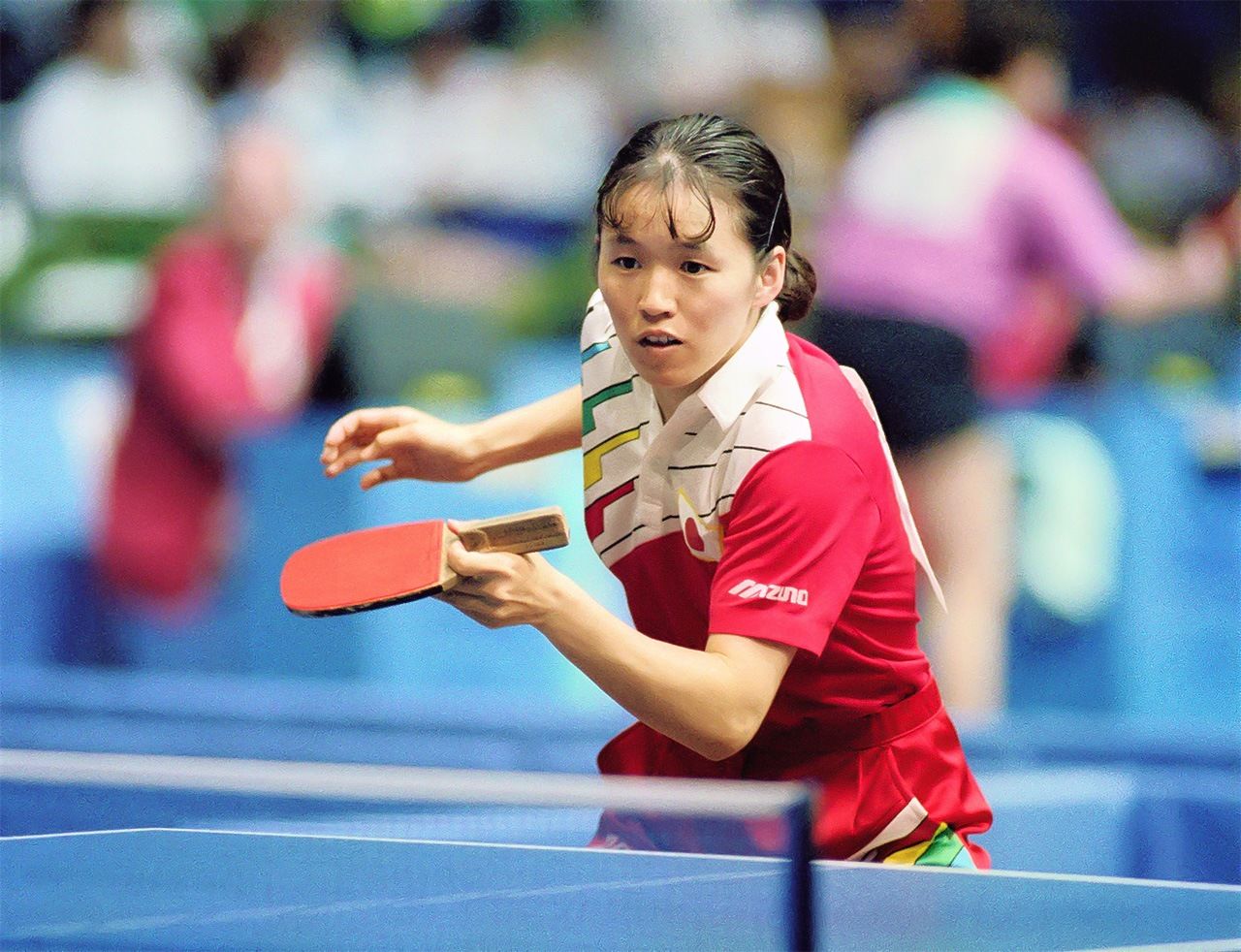
Hoshino Mika playing table tennis for Japan on a blue table manufactured by San-Ei at the Barcelona Olympics in July 1992. (© Jiji)
However, San-Ei’s first outing as an official Olympic supplier was marred by setbacks.
“We had never exported so many tables before. We put dozens of them in shipping containers and sent them off to Barcelona. However, the heat and humidity during shipping caused the tables to warp, rendering some of them useless. At the site, we immediately performed repairs, and managed to come up with enough tables in good condition for use at the games. Ever since then, we have exported our tables in refrigerated containers,” says Miura.
All tables used at the Olympics, World Table Tennis Championships, All Japan Championships, and other high-level competitions must be approved by the International Table Tennis Federation. The ITTF subjects tables to strict testing. For example, warping cannot exceed 3 millimeters over the entire table’s surface.
The parameters of the bound test are as follows. On each side of the table, balls dropped from a height of 300 millimeters onto 19 different points must all rebound to a height of between 230 and 260 millimeters. This test is performed a total of 57 times—three times at 19 different points—on each side of the table, and the difference in average rebound height between the two sides of the table must not exceed 1 millimeter.
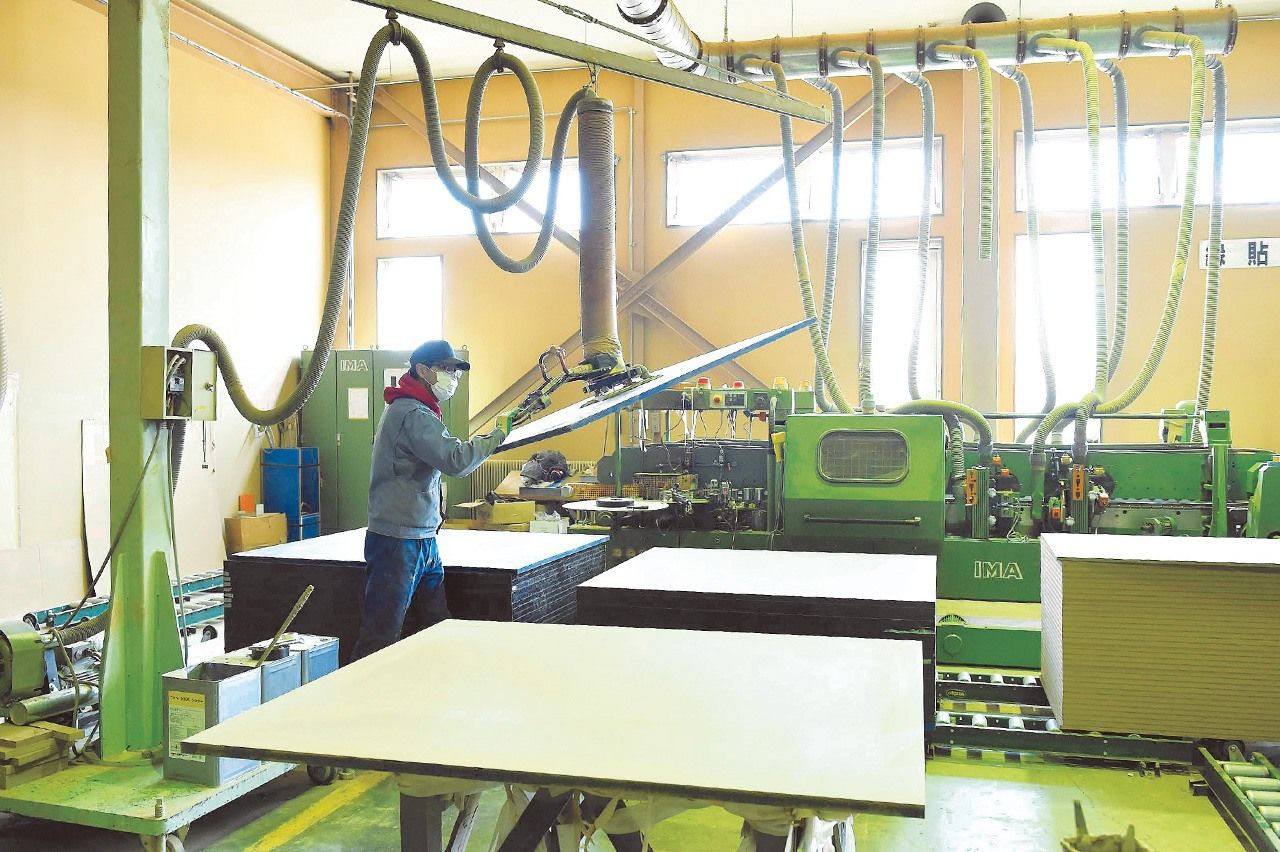
Manufacturing table tennis tables at San-Ei’s factory in Ashoro, Hokkaidō. (Courtesy of San-Ei)
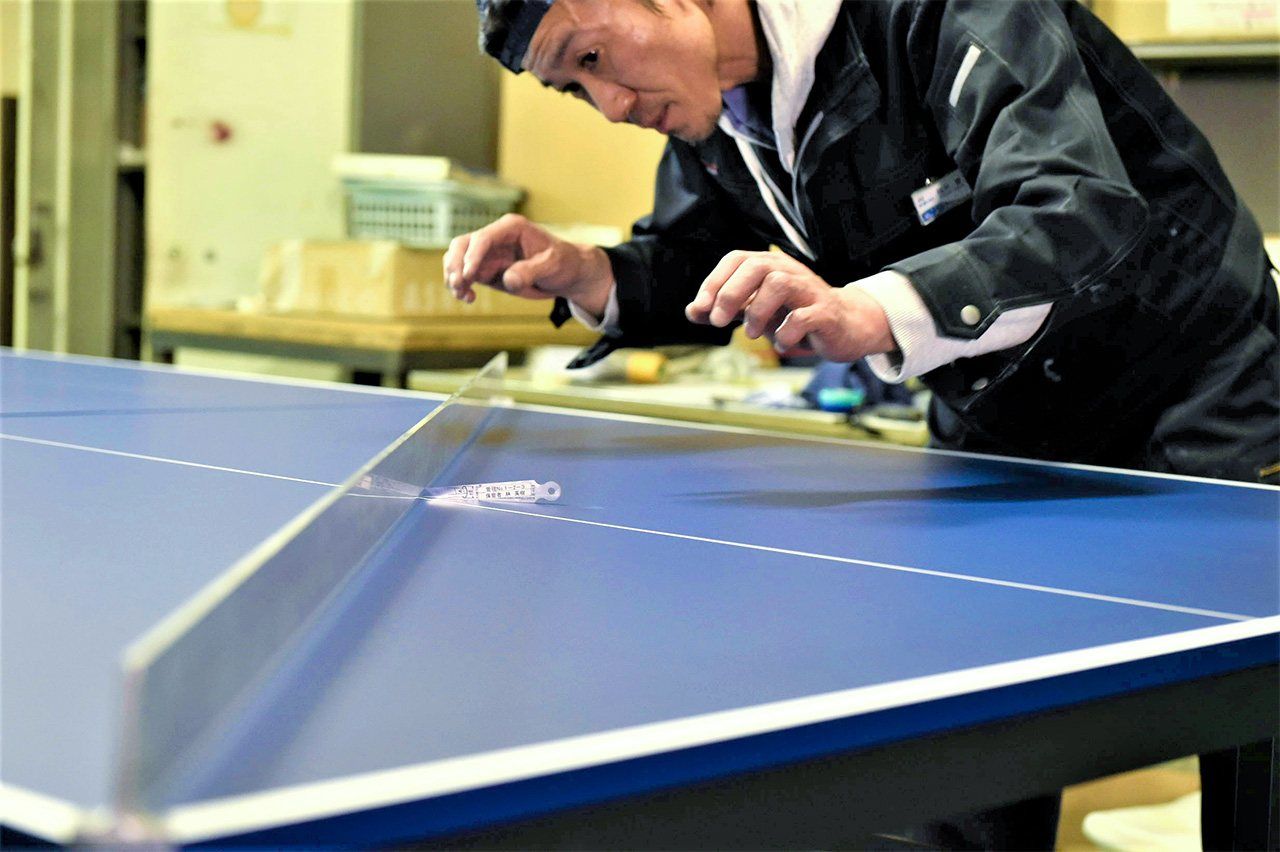
Workers check tables meticulously to ensure they will meet the demanding requirements of top players. (Courtesy of San-Ei)
Further requirements are in place for tables to reduce vibrations as quickly as possible when they are struck by a competitor’s racket or body during play. It goes without saying that the ITTF imposes such stringent regulations to reduce variation between tables.
To the keen senses of an ace player, however, no two tables are alike. Miura explains:
“Top players refer to tables as being ‘slippery,’ ‘soft,’ ‘fast,’ or ‘hard.’ In pre-match practice, they quickly work out which parts of the table give more or less rebound, and use this knowledge in the match. The received wisdom is that tables are springiest where the legs join the top, and a widely used strategy is to aim for this spot.”
They may not be noticeable to the average player, but irregularities are present in every table, and top-level players stand ready to take advantage of them. It is far from unusual for losing competitors to point to table quality as one factor in their defeat.
“Our tables are used by both sides,” continues Miura. “As such, we aim to make them uniform and fair with minimal irregularities, no matter who uses them. To this end, not only the tabletop but also the configuration of the legs is important. Because the joint between the legs and the tabletop will be springier than other areas, we use various tricks to minimize that inconsistency as much as possible.”
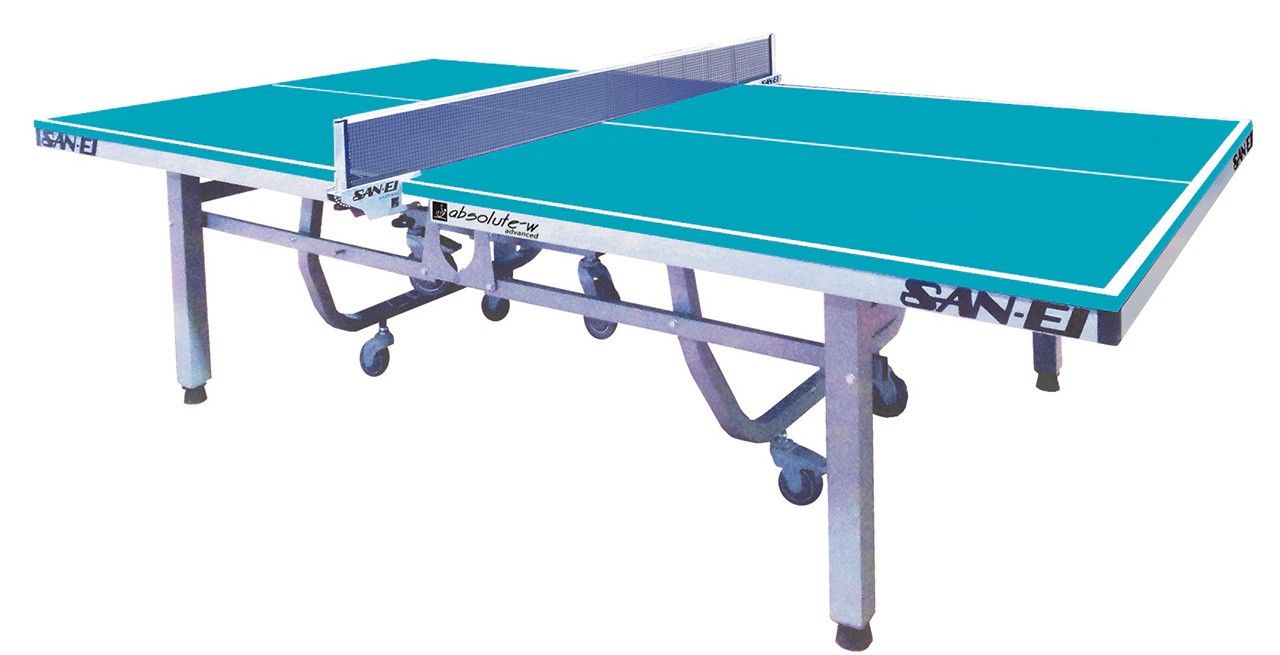
One of San-Ei’s flagship models, the inward-folding Absolute-W Advanced, comes in a color the company calls les yeux bleus, French for “blue eyes,” and is used at international tournaments. (Courtesy of San-Ei)
Pulling Out All the Stops for Rio
San-Ei’s second Olympics was the Rio de Janeiro games in 2016.
Unlike the Barcelona games, for which San-Ei was asked to supply tables, at the Rio games, San-Ei actively set out to win official supplier status. Miura explains the company’s aim.
“We had over 60 percent of the domestic market by around 2007, but struggled to increase our share any further. To instead grow our presence in the European market, we decided to participate in the world’s greatest sporting tournament. The Infinity model was the first with which we set out to brand ourselves more visibly on the global scene.”
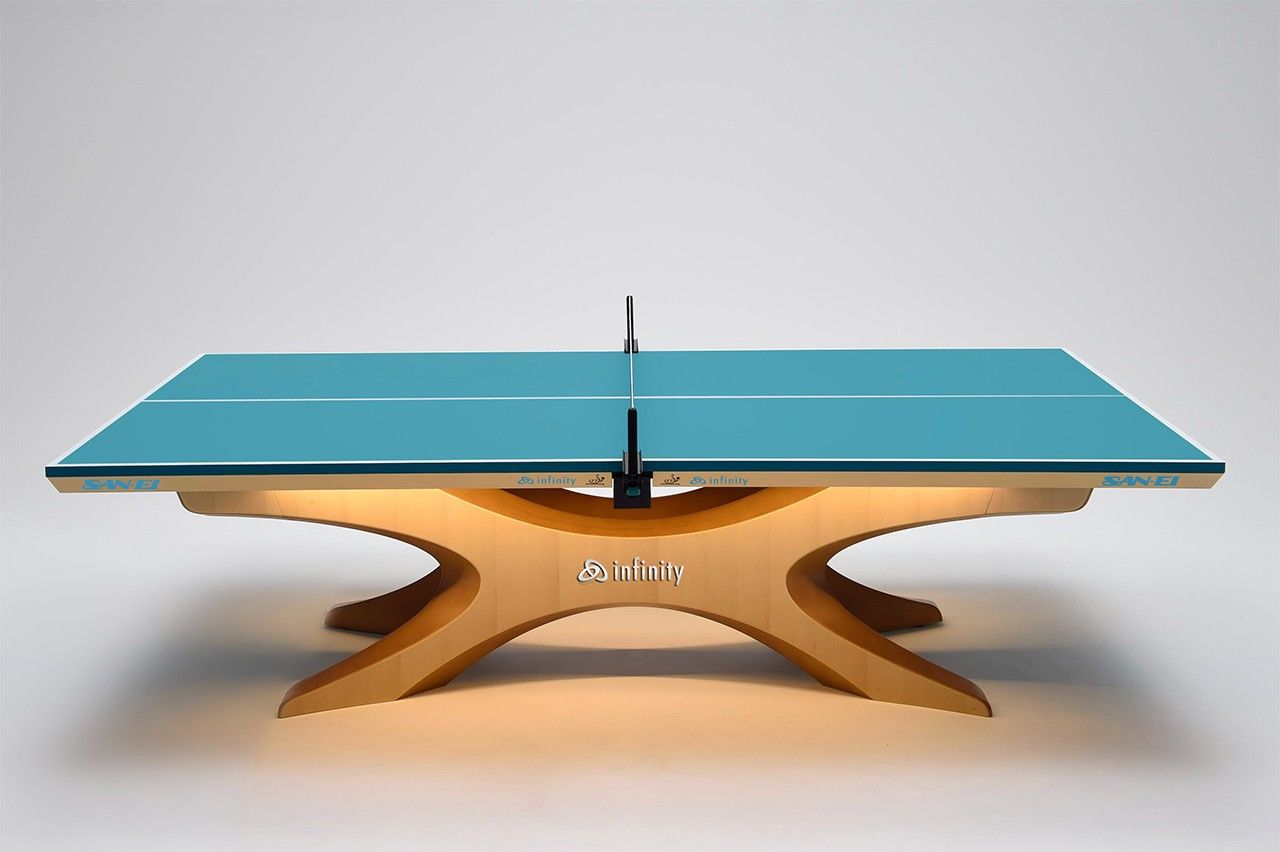
The sophisticated design of the Infinity raised eyebrows at Rio. (Courtesy of San-Ei)
San-Ei decided to create a table whose concept would surprise the entire world. Creating this table, though, proved to be more challenging than Miura and his team imagined.
“We made several trips to Brazil with the aim of better understanding the host country,” recalls Miura. “No discussion of Brazilian table tennis is complete without a mention of Japanese-Brazilian players. Many Japanese emigrated to South America thinking it would be paradise on earth, only to encounter great suffering when they arrived. I have heard stories about Japanese-Brazilians saying that in their difficult lives, their only pleasure was table tennis. These people have woven a rich, century-long history in Brazil, and I wanted to create a table that would make them proud of their Japanese roots.”
While most tables have metal legs, San-Ei decided to make the legs of this table out of wood. This was a nod to the Amazon, the world’s largest rainforest and the pride of Brazil, as well as to San-Ei’s origins as a lumber dealer. Product designer Sumikawa Shin’ichi suggested a cross-legged design. While the table was being developed, the 2011 Great East Japan Earthquake struck, an event that inspired the team to imbue the table with the message “helping together.” The developers also decided to make the legs out of beech sourced from Miyako, Iwate Prefecture. And thus, the first prototype was born.
However, it fell well short of the mark. “The use of crossed wooden legs created an issue where any impact would cause the table to vibrate,” says Miura. “We tried everything, including reinforcing the legs with carbon fiber, but nothing came close to solving the problem.”
When you’re trying to create an iconic table tennis table that will help your company take on the world, the importance of style and message cannot be understated. At the same time, if you get too caught up on appearance, functionality will invariably suffer.
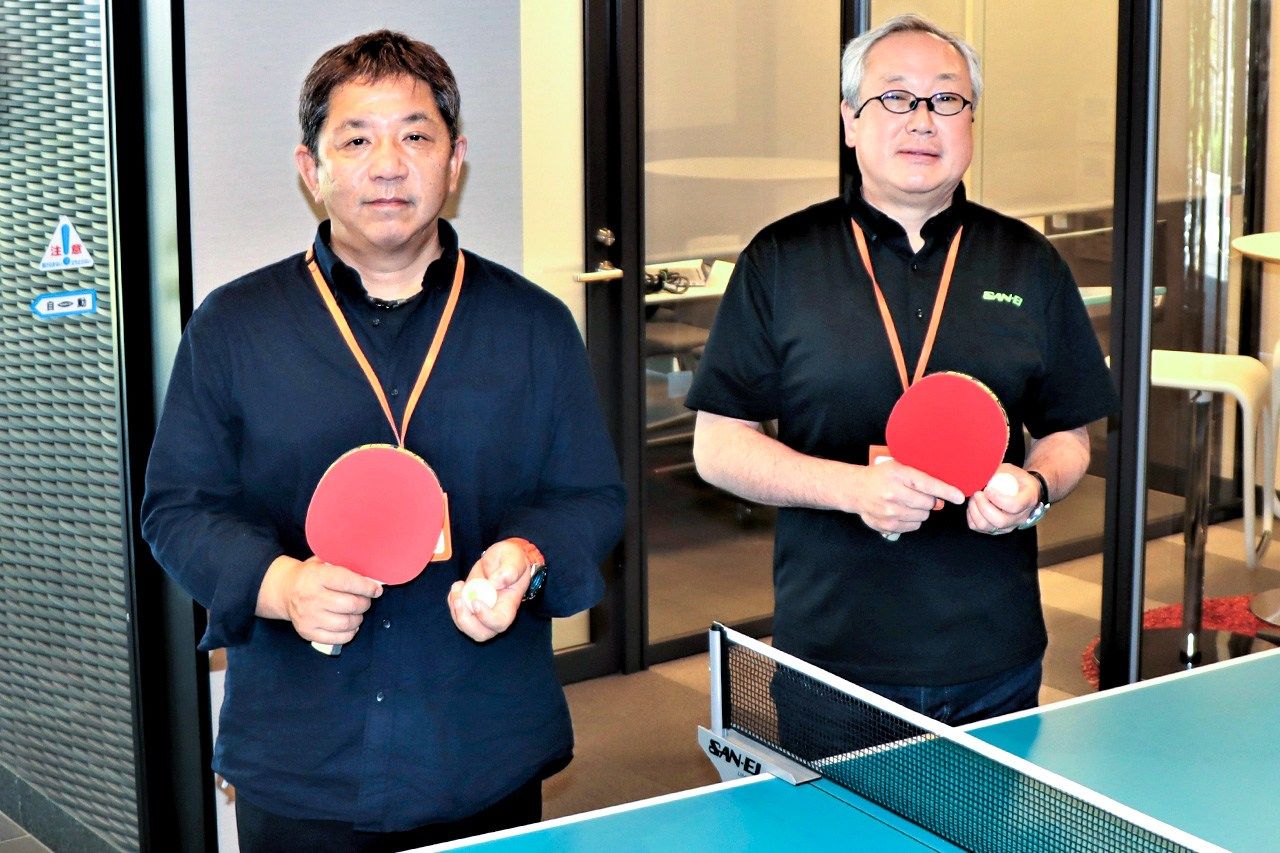
CEO Miura Shin, at right, with chief developer Yoshizawa Kesao at San-Ei’s head office in Chiba Prefecture. (Courtesy of San-Ei)
Satisfying these two mutually exclusive requirements required extensive trial and error. Yoshizawa Kesao, head of the development team, describes the development process: “To meet specifications for vibration damping and the like, you have to compromise on style. This struggle to achieve both ideals went on and on.”
Much of the time spent developing the Infinity was spent adjusting the wooden legs. Yoshizawa continues: “We would take off 1 centimeter one day, 5 millimeters the next. Despite our efforts to keep on pushing the envelope, we did not achieve what we were aimed for. Ultimately, we decided to bevel the legs, and we changed the color of the beveled areas to create a stylish look.” He notes with pride that the work on the legs was done by Tendō, a celebrated woodworking firm in Yamagata Prefecture.
And thus, after three and a half years of development, San-Ei released the Infinity, a table that melded a stylish appearance with excellent vibration-reduction capabilities.
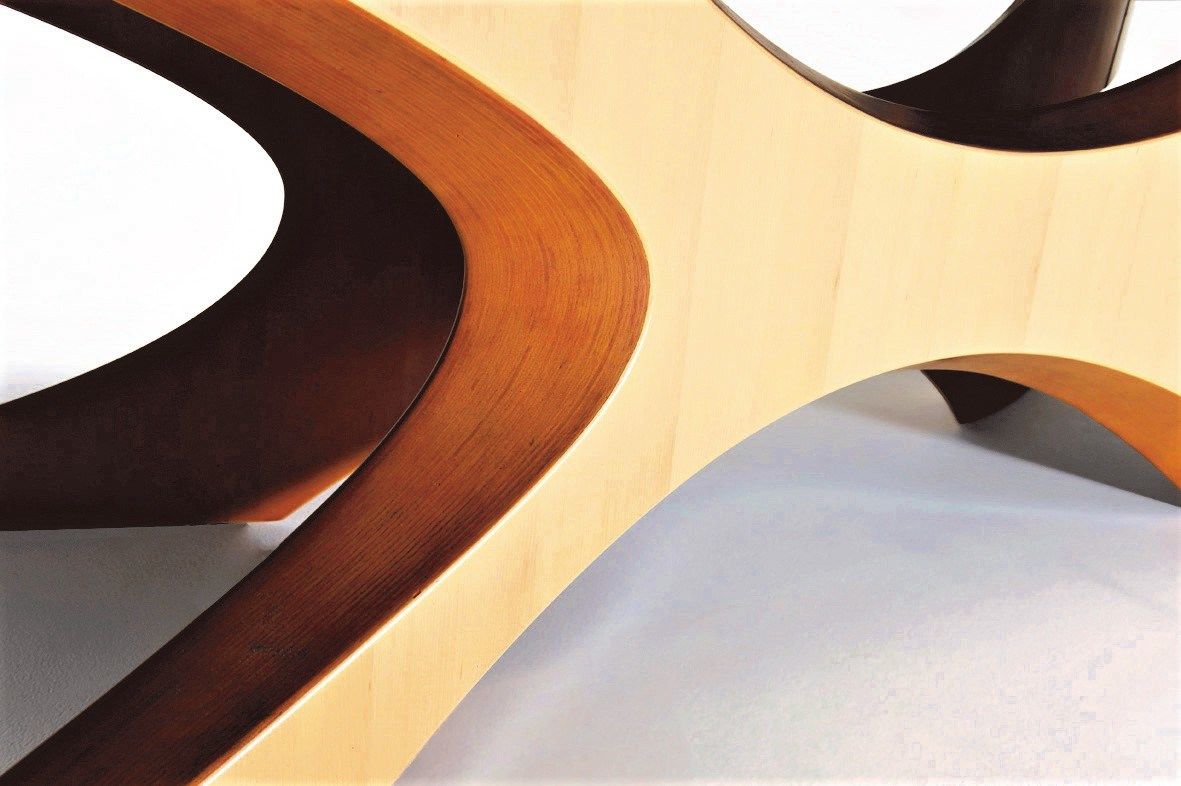
The legs caused the most headaches in the development of the Infinity. (Courtesy of San-Ei)
Hard Work Pays Off
The finished table was a stylish affair, resplendent in sky blue. Combining San-Ei’s engineering prowess and knowledge, the Infinity was a hit at the Rio Olympics. San-Ei became known as “the people who made the table tennis table for Rio,” and the company found itself inundated with inquiries from the media and prospective customers. After the games, not a single table tennis player blamed a loss on the table. San-Ei had won the difficult battle of table tennis branding.
After revolutionizing the way the world thought about table tennis tables with the Infinity, San-Ei went onto create the Motif for the 2021 Tokyo Olympics. Again, spectators were enthralled by this table’s unique form, which was the product of knowledge gained during the development of the Infinity. The Motif sports straight wooden legs finished in wajima-nuri lacquer, in a nod to Japan’s traditional crafts, which are struggling amid a shortage of young apprentices.
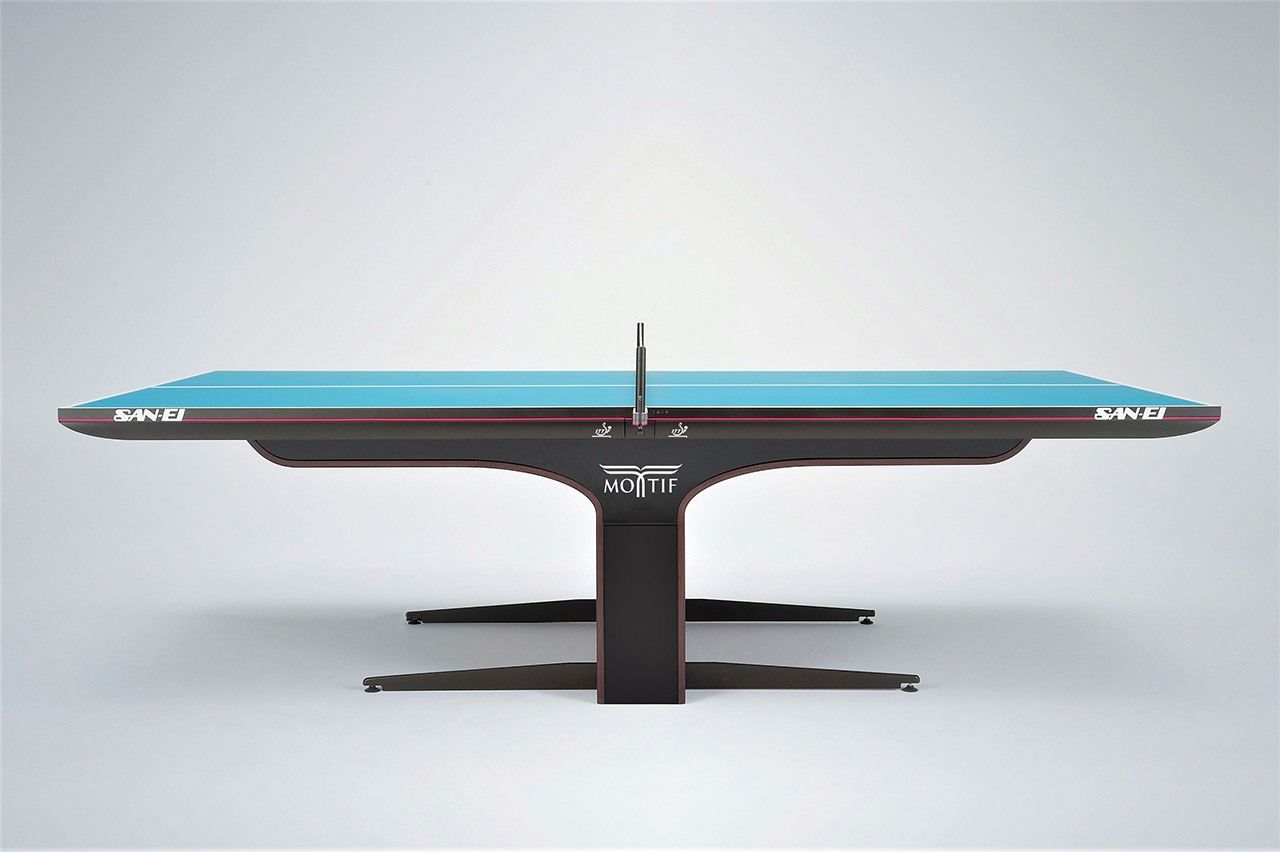
The Motif table used at the Tokyo games features legs made from birch sourced from Iwate and finished in wajima-nuri lacquer. (Courtesy of San-Ei)
Miura says, “Wajima-nuri tends to be associated with bowls and chopsticks. I believe many people’s first encounter with the lacquer would have been seeing one of the tables at the Olympics.”
San-Ei’s out-of-the-box thinking, combined with an ambitious approach of not being satisfied with the status quo, has opened up new potential for table tennis tables.
(Originally published in Japanese on June 15, 2023. Banner photograph: The men’s doubles table tennis finals between Japan, at left, and China are played on an San-Ei Infinity table at the Rio de Janeiro Olympics in August 2016. © Kyōdō.)